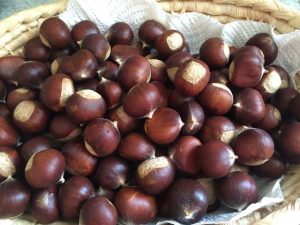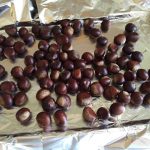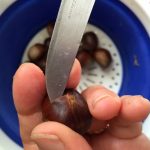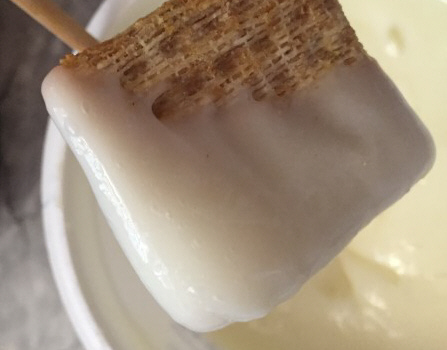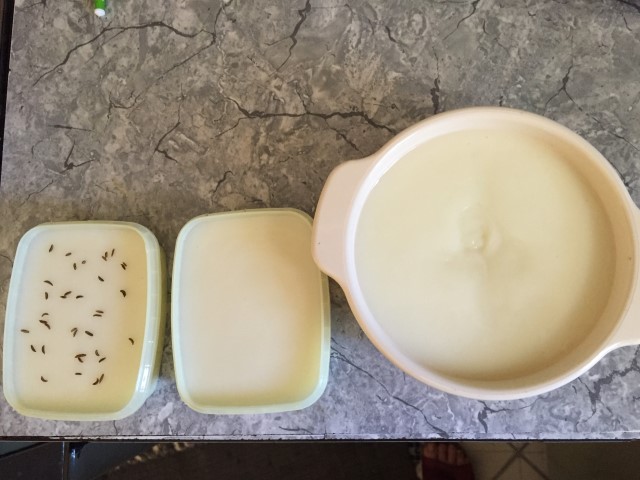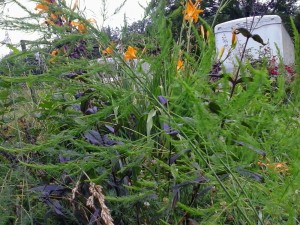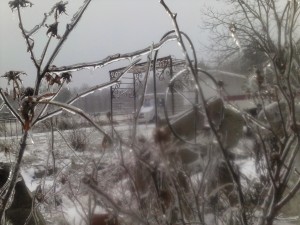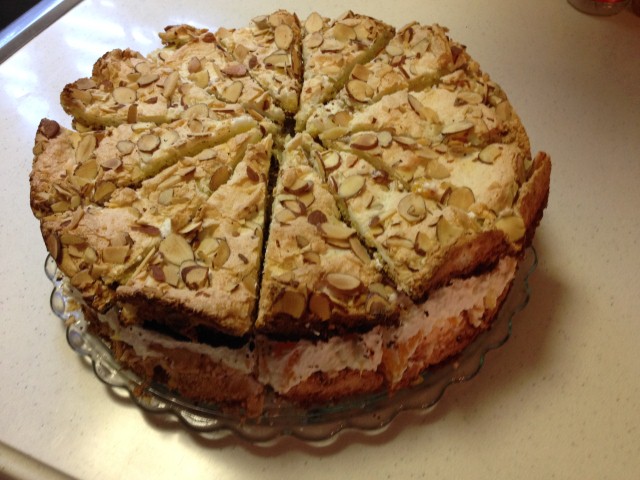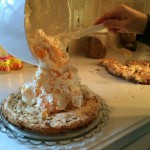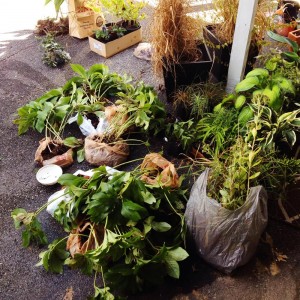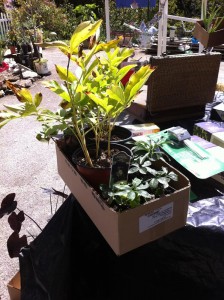A few weeks ago, I wrote about my first attempt at making apple jelly. (spoiler alert: it didn’t go well) As promised, this is the sequel to that post. It’s a good thing the apple trees were productive this year…
The Second Attempt
Making true apple jelly means extracting the juice from the apples. In all my research, it seemed that most folks cooked the apples until tender then hung them in a cheesecloth bag or strainer over night and let the juice drip down into a bowl.
Since making the jelly on my own was a failure, I decided to get the family involved on the second attempt. The apple trees grow on the family farm, after all. We didn’t have any cheesecloth, but we did find a new, clean, white undershirt — you know the kind commonly called a “wife beater.”
We cooked down the apples, then pulled the shirt over a huge mixing bowl. Of course when we put the apples into the shirt, it just fell down to the bottom. Since we are creative people, and there were about 10 of us trying to come up with a solution, we knew there had to be a way! There was: duct tape.
We taped the shirt to the bowl so that it wouldn’t fall down, put the apples in, and covered the whole mess. The next day…there was about ¼ cup of juice in the bottom of the bowl. I still don’t understand why our brilliant idea didn’t work. But, since it takes about 7 cups of juice to make a batch of jelly we were out of luck. Again.
At this point, I was ready to abandon the entire idea of making a sweet, preserved treat from the apples. I was leaning heavily toward slicing them and making half-cooked pies to freeze and use all winter. Because apple pie, right?
The Third Attempt
Then, I came across this recipe for Rosemary Infused Apple Preserves, and noticed that

I left the rosemary instead of removing it like the recipe instructed.
you used the whole apple — no need to extract the juice! I had to try one more time. Happily, the same day I made preserves, I’d promised to show a cousin how to bake homemade bread. We ended up with fresh, hot bread and homemade preserves. At the same time! It was a moment of culinary bliss.
This recipe resulted in something that seemed more like applesauce than it did anything else — but the most flavorful applesauce I’ve ever had. Since I’m a rebel, I didn’t really follow the recipe. Here’s what I did instead:
- Peel, core, and chop the apples
- Cook until they are soft, with a few sprigs of rosemary
- Taste
- Add the desired amount of sugar (I used significantly less than the recipe called for)
- Squeeze the juice of a lemon in
- Cook until the sugar is dissolved
- Mash and stir until you have a consistency you like
- Load into clean, sterilized jars and process in a water bath
I haven’t tried it yet, but these preserves would be delicious with a strong cheese. Or maybe with a pork roast. Definitely on breakfast toast. Next year, I’m skipping the jelly attempts and going straight for these preserves!
